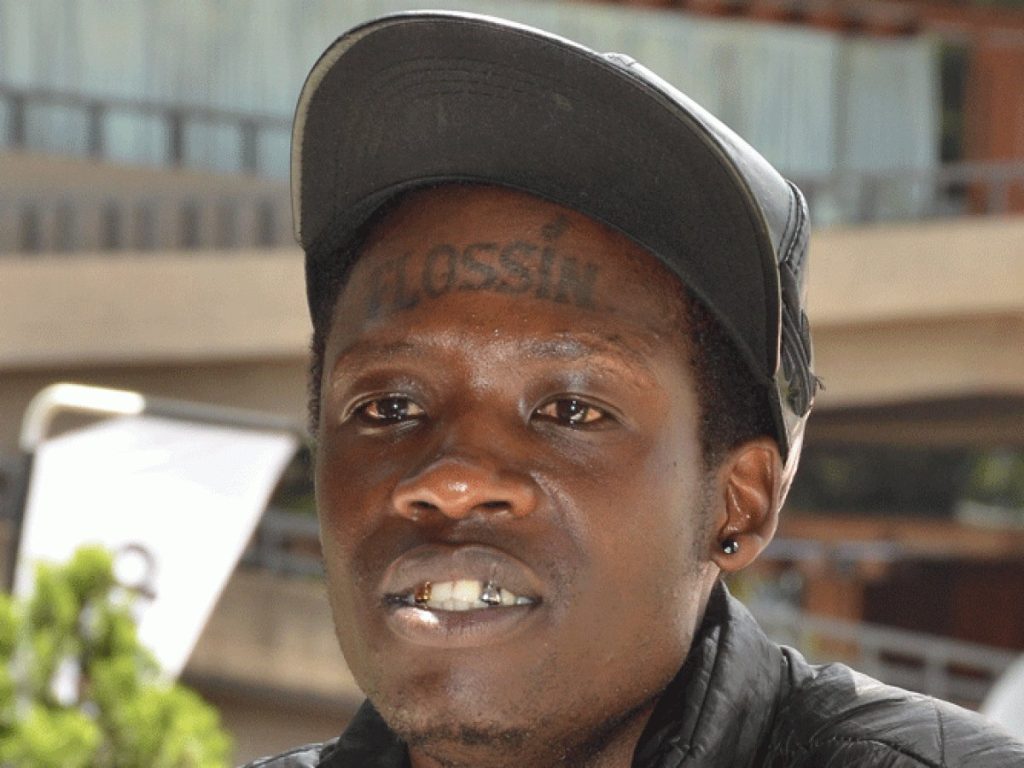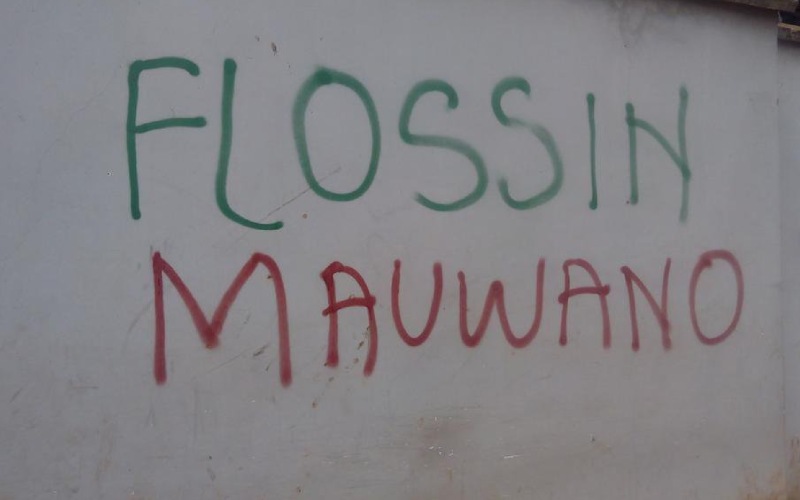Flossin Mauwano is a name that has gained notoriety in Nairobi’s urban landscape, particularly due to its frequent appearance as graffiti on walls, bridges, and other public spaces across the city.
The bold, often cryptic tags have sparked curiosity and concern among residents, leaving many to wonder about the meaning behind the phrase and the person or group responsible for it.
We delve into what “Flossin Mauwano” is all about, and reveal the identity of the individual behind the graffiti.
What Does Flossin Mauwano Mean?
Flossin Mauwano is a slang phrase that has become synonymous with street culture in Nairobi. The term “flossin” is derived from American hip-hop culture, where it typically means showing off or flaunting wealth and status.
“Mauwano,” on the other hand, is a sheng (a hybrid of Swahili and English) word that loosely translates to “issues” or “problems.”
Combined, “Flossin Mauwano” can be interpreted as flaunting one’s issues or problems, possibly as a form of rebellion or expression of street credibility.
Origin and Meaning of the Slang “Flossin Mauwano”
The origin of the slang “Flossin Mauwano” is deeply rooted in Nairobi’s vibrant street culture, where graffiti serves as a powerful tool for self-expression.
The phrase started appearing on walls and other public spaces around Nairobi in the early 2000s. Its cryptic nature and bold presentation quickly drew the attention of the public and authorities alike.
The graffiti often appears in areas that are considered low-income or neglected by the government, suggesting that the person behind it is drawing attention to the socio-economic struggles faced by many Nairobi residents.
It is also a form of marking territory, a common practice among graffiti artists, which can sometimes be misinterpreted as gang activity.
Who is Behind the “Flossin Mauwano” Graffiti?
The mystery surrounding the identity of the person or people behind the Flossin Mauwano graffiti has finally been solved.
Stephen Mule, an artist and former roadside hawker, is the self-styled creator of the Flossin Mauwano slogan. Mule’s journey into the world of graffiti began after witnessing numerous road accidents during his time as a hawker, coupled with the tragic death of his parents in a road accident during the 1997 election violence.

His work is not just art but a form of social activism aimed at promoting road safety and awareness around accident-prone areas in Nairobi.
Inspiration behind the Slang Flossin Mauwano
In an interview with The Standard, Stephen Mule revealed the deeply personal inspiration behind the Flossin Mauwano slogan.
In 1997, during the election violence that erupted in Kenya, Mule witnessed his parents being fatally knocked down by a vehicle along Langata Road while fleeing from an irate crowd. This traumatic event left an indelible mark on him, driving him to find a way to make a difference.

After losing his parents, Mule lived with his stepmother, faced multiple challenges, and struggled to stay in school. Despite these hardships, he eventually completed his education and became a roadside hawker, where he witnessed many accidents.
Frustrated by the ineffectiveness of traditional road signs, Mule used his artistic skills to create the Flossin Mauwano slogan, strategically placing it around blackspots to caution drivers. His aim was to instill a sense of caution in drivers who might not fully understand the meaning but would become more alert to their surroundings, potentially preventing accidents.
Mule’s work has often been misunderstood by authorities, who have dismissed his graffiti as vandalism, associating it with drug abuse. However, Mule insists that his intentions are well-meaning, and his art is a form of activism rather than mere defacement.
Is Flossin Mauwano Gang-Related?
One of the most pressing concerns among Nairobi residents and authorities is whether Flossin Mauwano is gang-related.
Graffiti is often associated with gang activity in various parts of the world, where tags are used to mark territory or send messages to rival gangs. However, in the case of Flossin Mauwano, there is little evidence to suggest a direct connection to organized crime or gang activity.
Instead, the graffiti appears to be more of an artistic expression, albeit one that is provocative and rebellious. The use of public spaces as a canvas can be seen as a challenge to authority and a way of reclaiming neglected areas of the city.
While some may perceive this as threatening, it is more likely that the graffiti is intended to provoke thought and discussion about social issues rather than incite violence or criminal activity.
Did Flossin Mauwano Inscribe Viral Graffiti on Nairobi Expressway?
In 2022, the Flossin Mauwano tag gained widespread attention when it appeared on the Nairobi Expressway, a major infrastructure project in the city. The graffiti quickly went viral on social media, sparking debates about its meaning and the implications of such a bold act.
However, the man behind the Flossin Mauwano slogan, Stephen Mule, has come forward to deny being responsible for the graffiti on the Expressway. Mule clarified that while Flossin Mauwano is indeed a movement, he was not the one who inscribed the tag on the Expressway.
He expressed his amazement at how an ardent fan managed to get the signature up there, noting that it remains a puzzle to him.
“People have been asking how I got all the way up, but to be honest, Flossin Mauwano is a movement and one of my fans probably did it,” he said in an interview. “Just so to be clear, I am not the one who wrote the graffiti. Actually, I am in awe of how the ardent fan got the signature up there…it’s a puzzle.”
***
Although the graffiti may have been misunderstood and dismissed as gang-related, it is clear that Flossin Mauwano is more than just random tagging. It is a powerful form of social commentary and a call to action, challenging drivers and authorities alike to pay attention to the issues that matter.


